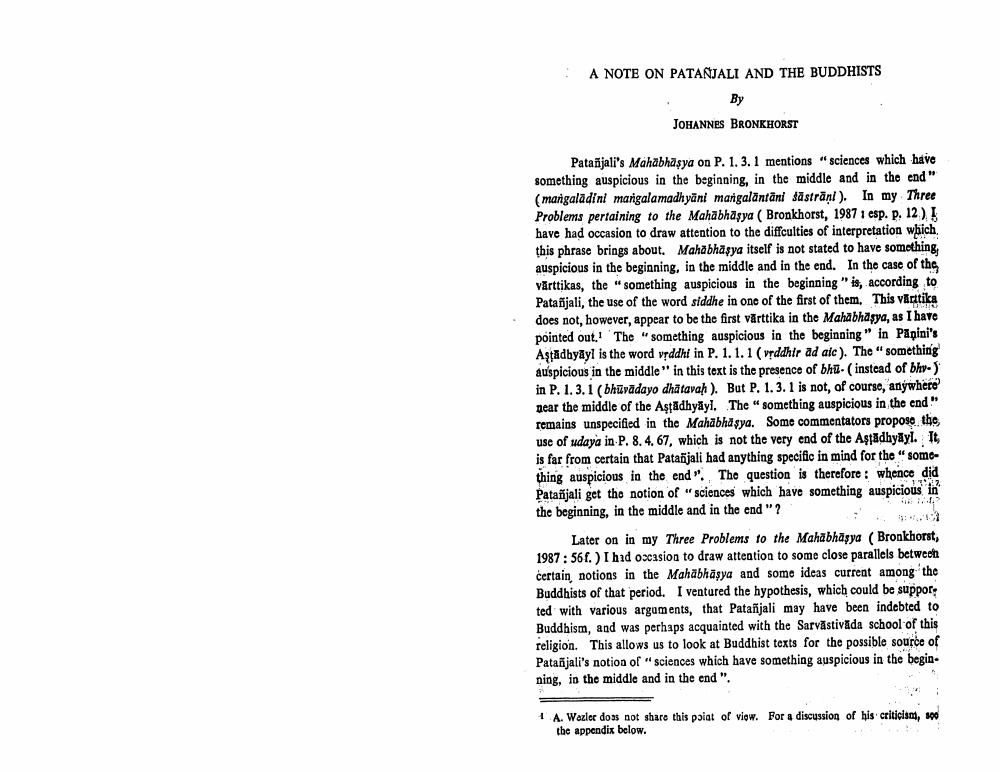Book Title: Note In Patanjali And The Buddhists Author(s): Johannes Bronkhorst Publisher: Johannes Bronkhorst View full book textPage 1
________________ A NOTE ON PATANJALI AND THE BUDDHISTS JOHANNES BRONKHORST Patañjali's Mahabhasya on P. 1.3.1 mentions "sciences which have something auspicious in the beginning, in the middle and in the end " (margaladini mangalamadhyāni mangalantani fāstrāņi). In my Three Problems pertaining to the Mahabhāşya ( Bronkhorst, 1987 1 esp. p. 12 )! have had occasion to draw attention to the diffculties of interpretation which, this phrase brings about. Mahabhäşya itself is not stated to have something auspicious in the beginning, in the middle and in the end. In the case of the värttikas, the "something auspicious in the beginning" is, according to Patanjali, the use of the word siddhe in one of the first of them. This vaatika does not, however, appear to be the first vārttika in the Mahabhasya, as I have pointed out. The "something auspicious in the beginning" in Papini's Aşpadhyayl is the word vddhi in P. 1.1.1 (veddhir ad alc). The "something auspicious in the middle" in this text is the presence of bhil. (instead of bhy.) in P. 1. 3.1 (bhūvādayo dhatavah ). But P. 1. 3. 1 is not, of course, anywhere picar the middle of the Aştādhyayl. The "something auspicious in the end." remains unspecified in the Mahabha sya. Some commentators propose the use of daya in P. 8. 4.67, which is not the very end of the Aştādhyayl. It is far from certain that Patañjali had anything specific in mind for the "somothing auspicious in the end". The question is therefore : whence did Patañjali get the notion of sciences which have something auspicious in the beginning, in the middle and in the end "? Later on in my Three Problems to the Mahabhasya ( Bronkhorst, 1987: 56.) I hid oscasion to draw attention to some close parallels between certain notions in the Mahabhāşya and some ideas current among the Buddhists of that period. I ventured the hypothesis, which could be supporo ted with various arguments, that Patañjali may have been indebted to Buddhism, and was perhaps acquainted with the Sarvāstivada school of this religion. This allows us to look at Buddhist texts for the possible source of Patañjali's notion of sciences which have something auspicious in the begin ning, in the middle and in the end ". + A. Wazier do not share this point of viow. For a discussion of his criticism, 300 the appendix below.Page Navigation
1 2 3 4 5
